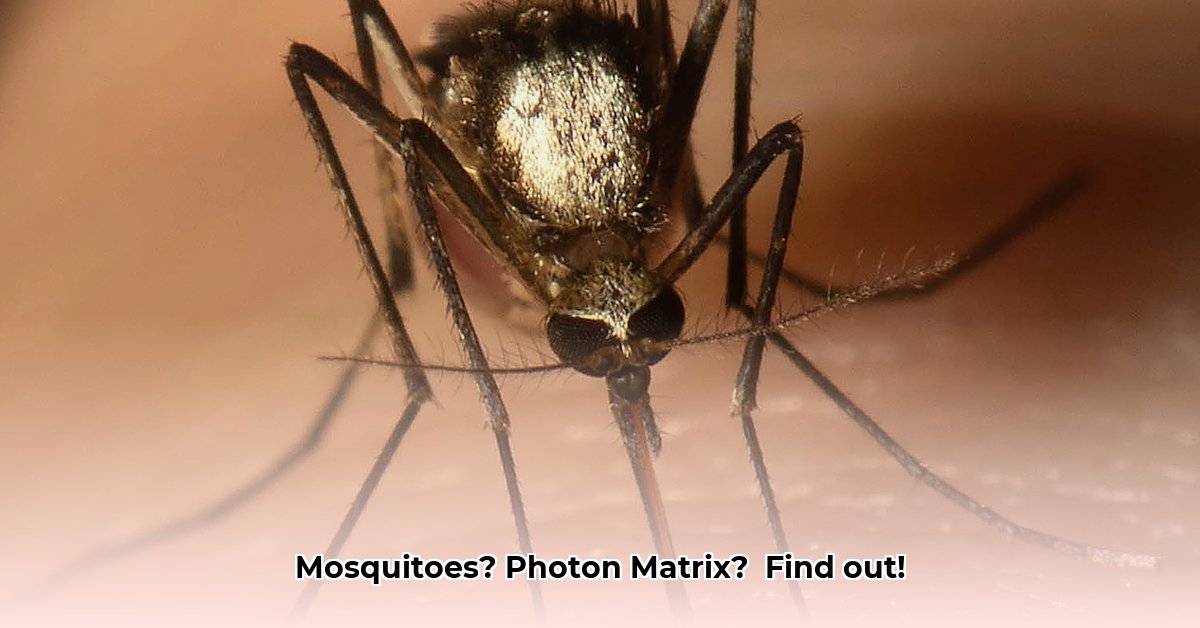
Photon Matrix Technology Overview
The Photon Matrix mosquito defense system uses lasers, guided by LiDAR (Light Detection and Ranging) and millimeter-wave radar, to eliminate mosquitoes. This cutting-edge technology aims for precision targeting, potentially reducing the environmental impact compared to broader methods like insecticides. However, the effectiveness and safety of this high-tech approach require careful scrutiny. The system identifies mosquitoes using its sophisticated sensor suite before deploying a low-power laser to neutralise them. But how effective is this laser-focused approach in the real world? For more on laser technology, see this air defence resource.
Performance and Efficacy: Zap or Zonk?
Early lab tests suggest the Photon Matrix possesses impressive potential. Initial reports indicate a high kill rate in controlled environments, potentially eliminating up to 30 mosquitoes per second under ideal conditions. However, real-world performance needs further investigation. Factors like wind, rain, and the density of other flying insects significantly impact accuracy. Has the Photon Matrix been rigorously tested under various environmental conditions and with diverse mosquito species? More comprehensive, long-term data is needed to confirm its efficacy. "Controlled environment testing is only part of the equation," explains Dr. Anya Sharma, Entomologist at Stellenbosch University. "Real-world applications present unique challenges that need careful consideration."
Safety Concerns: A Laser Focus on Risk
The safety profile of the Photon Matrix is a major concern. While the lasers employed are low-power (Class 1), direct eye exposure must be avoided at all costs. The lack of comprehensive safety testing and regulatory approvals raises serious questions. Could the system accidentally harm beneficial insects, such as bees or butterflies? What about the long-term environmental impact? Dr. Sharma further cautions that, "Thorough safety assessments, including eye safety protocols and ecological impact studies, are crucial before widespread adoption." The need for clear safety guidelines and user education is paramount. What safety measures are in place to prevent accidental irradiation of humans or animals? These questions demand answers.
Cost and Accessibility: A Premium Price Tag
Priced between R7,500 and R14,500, the Photon Matrix is a premium product, limiting its accessibility for many. This cost significantly restricts its potential utility, especially in resource-constrained communities. Comparing it to more affordable options like the Iris device (approximately R3000), the price disparity is stark. Is the technology worth the cost? This is a compelling question that needs careful consideration. For many, the investment will be unrealistic. "Affordable and accessible mosquito control is key to public health," notes Professor Ben van Rooyen, Head of Public Health at the University of Cape Town. "High costs limit the reach of even the most innovative technologies."
Comparison to Alternatives: A Landscape of Solutions
The Photon Matrix occupies a unique position within the landscape of mosquito control solutions. Insecticides offer broad coverage but carry significant environmental risks. The Photon Matrix aims for precision, but its effectiveness and safety are still under scrutiny. Other devices, such as the Iris, offer non-lethal trapping, though with potentially lower efficacy. The choice depends on individual priorities and risk tolerance.
Conclusion: Potential, But Not Yet Ready for the Massen
The Photon Matrix demonstrates innovative engineering with potential benefits. However, significant hurdles remain before it becomes a viable solution for widespread use. Thorough independent safety testing, regulatory approval, and a substantial price reduction are all critical to achieving wider acceptance. "While the technology is impressive," concludes Dr. Sharma, "the current lack of long-term safety data and high cost prevent us from recommending it for general use." Until these issues are addressed, existing methods remain safer, more affordable and readily available options.
How to Safely Use Laser-Based Mosquito Control Devices (If You Have One)
- Never point the device at eyes or skin. Serious eye injury could result, even with low-power lasers.
- Follow manufacturer instructions meticulously. Do NOT deviate from the operating procedures specified by the manufacturer.
- Keep children and pets at a safe distance. Young children and pets are especially vulnerable to unintended harm.
- Ensure adequate ventilation. Always operate the device in a well-ventilated area.
- Report any malfunctions promptly. Immediately contact the manufacturer or relevant authorities concerning any unusual occurrences or malfunctions.
This information is for general guidance only. Always refer to the manufacturer's instructions for specific safety guidelines.
Comparison Table: Photon Matrix vs. Iris
| Feature | Photon Matrix | Iris |
|---|---|---|
| Technology | Laser-based, LiDAR, and millimeter-wave radar | Non-lethal trapping |
| Approximate Cost (ZAR) | R7,500 - R14,500 | Approximately R3,000 |
| Safety | Untested; potential eye injury risk | Generally safe |
| Effectiveness | Potentially high, but requires further testing | Moderate, proven effectiveness |
| Accessibility | Limited due to high cost | Widely accessible |